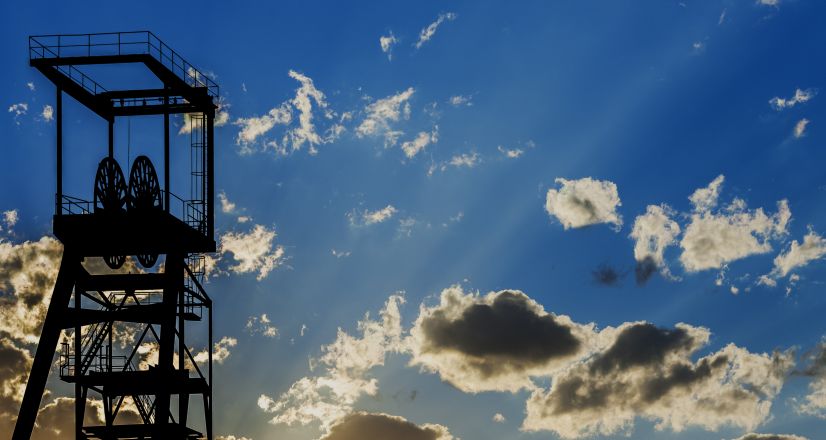Back Visit to the trenches of Soto del Barco, the forts of Ranón

Visit to the trenches of Soto del Barco, the forts of Ranón
The trenches of Soto del Barco are an opportunity to learn about history in the midst of beautiful landscapes and panoramic views that will leave you impressed.

These vestiges of military architecture, built in the early years of the war, belong to the Avilés Front and can be visited thanks to the collaboration of local residents and the Soto del Barco Town Council. Let's discover them on a pleasant stroll along the central Asturian coast.
Although Asturias is home to the largest number of camouflaged batteries in Spain, in few cases is there a commitment to the preservation of the historical memory of the Civil War.
Tiptoeing through the Nalón's wartime history
In all wars there are two sides and a border line. In this area of Asturias, the dividing line between the rebels and the Republicans was marked by the River Nalón. When the war began, the Republicans surrounded the capital, Oviedo/Uviéu, to prevent the rebels from joining forces with the Galician Columns which, in September 1936, had already taken the council of Pravia.
The Nalón Front defended the Grado Corridor (Historical Area of the Nalón Front). On the coast, next to the black mouth of the river, the Avilés Front did the same. The Republicans fought for fifteen months to prevent Franco's army from controlling the whole territory. After a long and devastating series of skirmishes, Franco's troops, fresh from Africa, seized power.
All that remains of this terrible - and regrettable - chapter in Spanish history is the memory of our elders and the scene of their experiences. A heritage forged in blood that deserves to be preserved and known, because, as Santayana said: "He who forgets his history is condemned to repeat it".
From Ranón to the fortifications of the Civil War
The village of Ranón gives its name to the Asturias Airport due to its proximity. Although the Gps says otherwise, my advice is to get there from L'Arena. It will be easier and quicker. Ranón is a quiet village that the villagers look after with care. The old farmhouses are interspersed with new buildings, mostly distributed around the parish church.

In front of the entrance there is space to park without disturbing the neighbours. You will also find a rest area with a table, bench and fountain, a park and a sports court where, especially in summer, the young people of the village tend to gather. On both sides of the church there are signs saying "CASAMATA", the way to follow.

After skirting the plots of land near the church, we leave the asphalt. A dirt track, guarded at the beginning by walls with leafy hydrangeas, leads us into the forest.

In a kilometre and a half we reach the Civil War fortifications. The route is practically flat, but it is neither adapted nor suitable for prams. It can be done by mountain bike, and at the end of the article I will suggest an extra stop that can complete your mountain bike route.
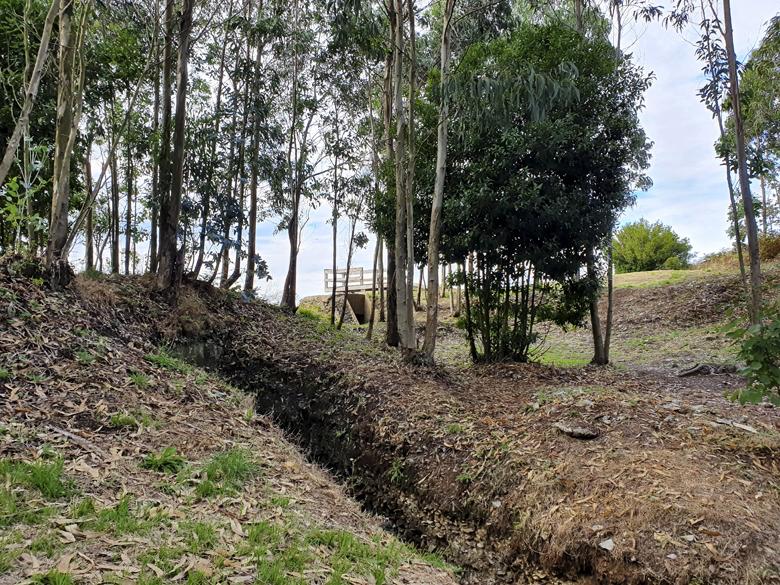
This is what the trenches of Soto del Barco look like.
The 4th Company of the 3rd Engineer Battalion built four reinforced concrete casemates, connected by galleries. They are not visible to the naked eye, as they are hidden under the undergrowth.

More obvious is the 50-metre-long trench linking the two forts and the artillery battery at La Peña. This coastal battery had four 119.3 millimetre Vickers/Armstrong guns.
The fabulous state in which this military complex is in allows us to access its interior and walk through the galleries.

Don't forget to bring a torch and closed shoes, as it is very likely that there will be mud or water inside.

The L'Arena Tourist Office, located in the Puerta del Mar Interpretation Centre, organises highly interesting guided tours to learn more about the history of the Civil War in Asturias. Appointments by telephone on 985 586 558.
Viewpoint of L'Arena
Right there, in the front line of fire, a viewpoint has been set up on a wooden platform. From it, if the day is clear, you can see the top of Monteagudo , where there is a recreational area with views of the meanders of the Nalón. This spectacular spot is accessed from Somao, Exemplary Village of Asturias 2020.

Opposite us, on the other side of the Nalón, is the village of San Esteban, famous for having the first coal port in Spain, declared an Asset of Historic-Industrial Interest. It is also worth mentioning the start of the Senda de los Miradores de Muros, a simple route with spectacular views of the Cantabrian Sea.
From this viewpoint, below our feet, L'Arena, the mouth of the Nalón, and Los Quebrantos Beach, striking for its black sand, precisely because of the tons of coal that were moved in the port between the 19th and 20th centuries.
Do you want more? Continue the walk along the central coast of Asturias
If you feel like continuing with the walk, or extending your MTB route, descend along a zigzagging path that will take you in record time to the vicinity of the village cemetery, close to the seafront promenade.
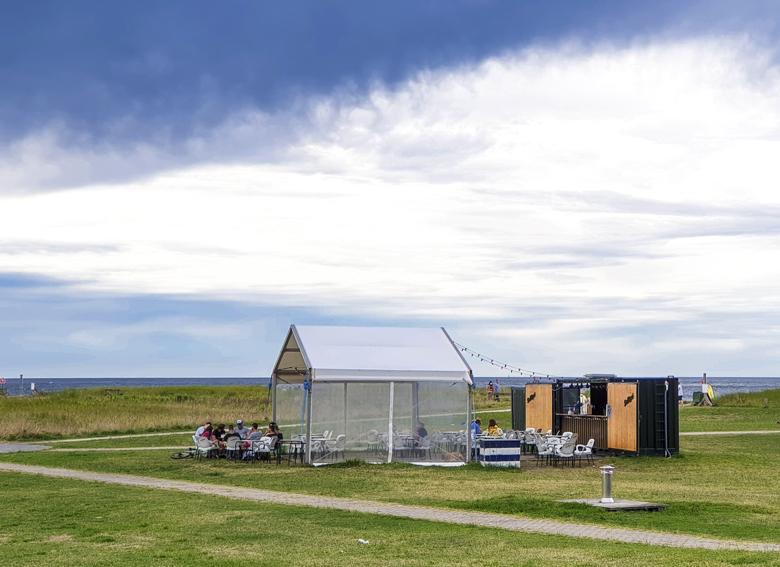
Another way to visit the Ranón trenches is to park next to Los Quebrantos beach and walk up the mountainside.
Following the coastal path you will find a couple of beach bars and at the end of it, some stairs that lead to the viewpoints of Punta de Pozaco.
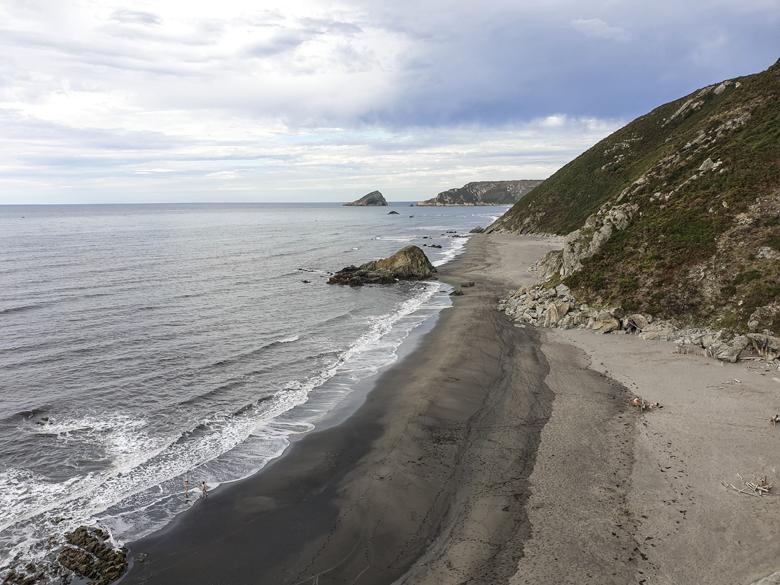
From them you can see the Natural Monument of La Deva Island and the Playón de Bayas (respectively, the largest island and the longest sandy beach in Asturias).
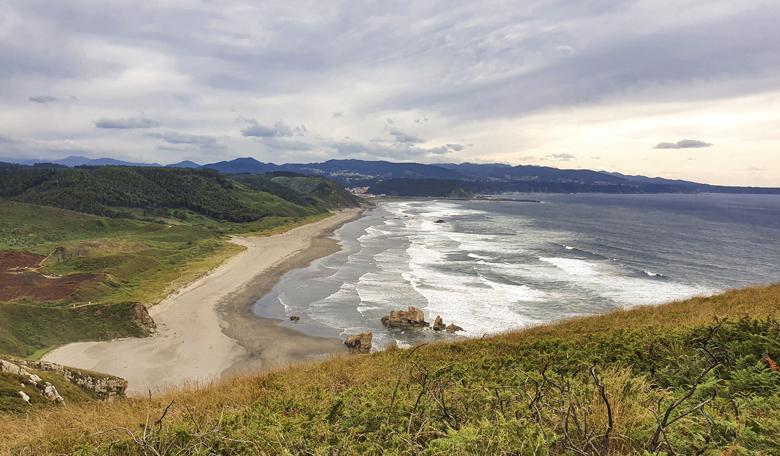
If you want to do a long walk, you can go down to the beach via the stairs, walk along the 4 kilometres of sandy beach and follow the route along Phase III of the Northern Path. This will take you to the Arnao Mine Museum - the first underwater mine in Europe.
If you choose this route, I recommend: first, check the tide table, as it is only possible at low tide; and second, take two vehicles and leave them in the village of Ranón and in Arnao.
If you want to continue discovering scenes from the Civil War in Asturias, visit the Frente del Nalón Historical Area (Candamo).
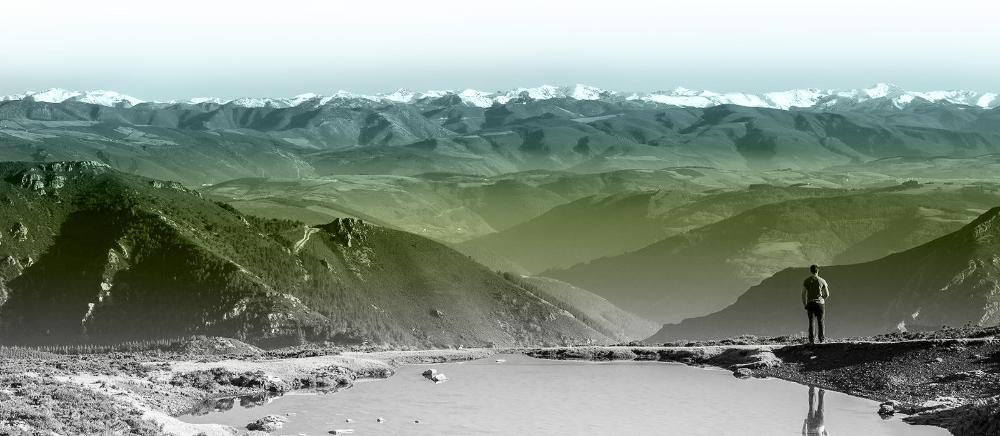
Subscribe to our newsletter and take advantage of offers, discounts, and news
Subscribe



